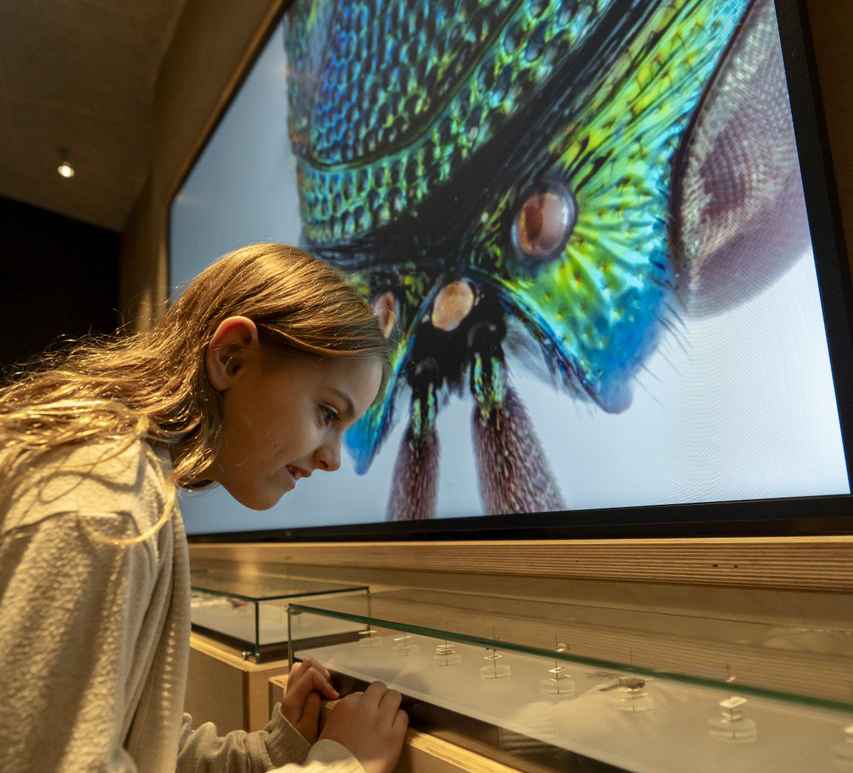One of the candidates for the 2016 Provincial Fossil Campaign was a short-necked plesiosaur called Dolichorhynchops herschelensis (pronounced ‘Dolly-cor-in-cops Her-shell-en-sis’). The only known specimen of this species comes from the village of Herschel, not far from Rosetown, SK.
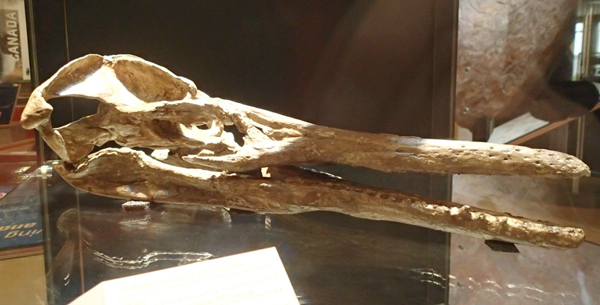
Skull of Dolichorhynchops herschelensis at the T.rex Discovery Centre.

Sculpture outside the Ancient Echoes Interpretive Centre in Herschel, SK.
Although the Dolichorhynchops was collected almost 30 years ago, palaeontologists at the Royal Saskatchewan Museum have returned to Herschel time and again. There are many more secrets about Saskatchewan’s geologic past hidden there.
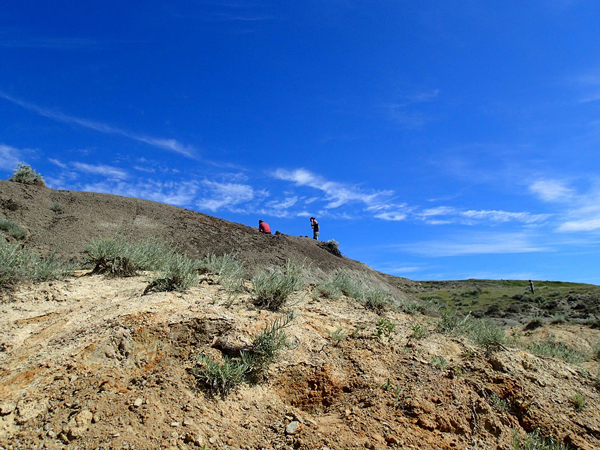
Prospecting for fossils near the village of Herschel.
The fossil deposits that surround Herschel, SK are unique for two reasons. Firstly, they are from a period in the Late Cretaceous that is not well represented or understood in Saskatchewan. Secondly, they contain an intriguing mix of marine and terrestrial fossils. This implies that the sediments were deposited right on the very edge of the Western Interior Sea, the shallow seaway that once covered the middle of North America from the Gulf of Mexico to the Arctic Circle.
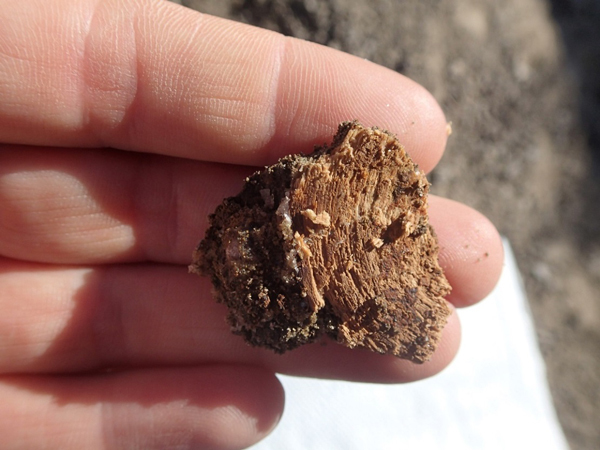
A terrestrial fossil – the cross-section of 74-72 million year old wood still containing tree rings -- preserved in the Herschel marine bonebed.
Herschel is also home to a hugely productive marine bonebed, discovered by the RSM’s Tim Tokaryk in the 1990s. In palaeontology, a ‘bonebed’ is a dense accumulation of fossils from one or more types of vertebrate animal. While large dinosaur bonebeds are generally uncommon in terrestrial rocks, there are several good examples from Alberta (i.e. Pipestone Creek Bonened near Grande Prairie). Marine bonebeds, on the other hand, are extremely rare.
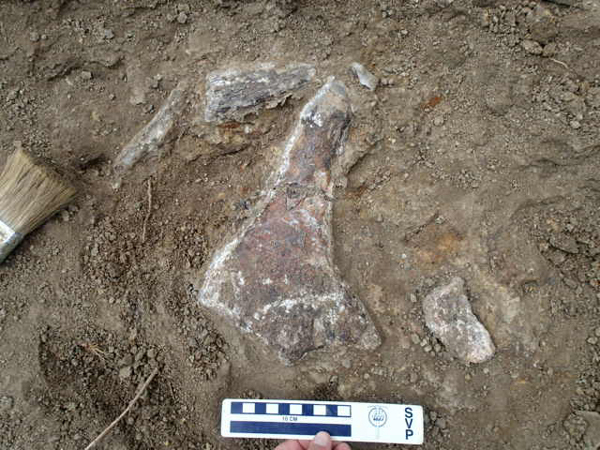
Fossils of a short-necked plesiosaur in the Herschel marine bonebed.
The RSM has been collecting at the Herschel marine bonebed for more than 20 years. Local volunteers, young and old, come out each year to help.
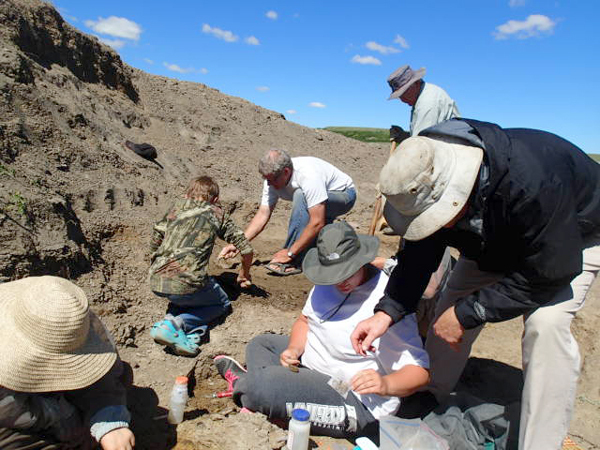
Local volunteers and students help with the collection at the Herschel Marine Bonebed in 2014.
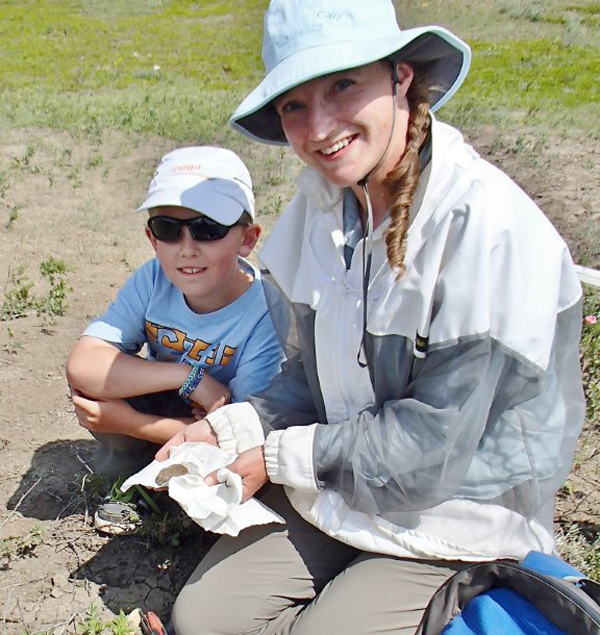
Local volunteers and students help with the collection at the Herschel Marine Bonebed in 2014.
The marine bonebed contains short-neck plesiosaurs (polycotylids), long-neck plesiosaurs (elasmosaurs), mosasaurs, several species of shark, chimaera (ratfish), and many types of bony fish.
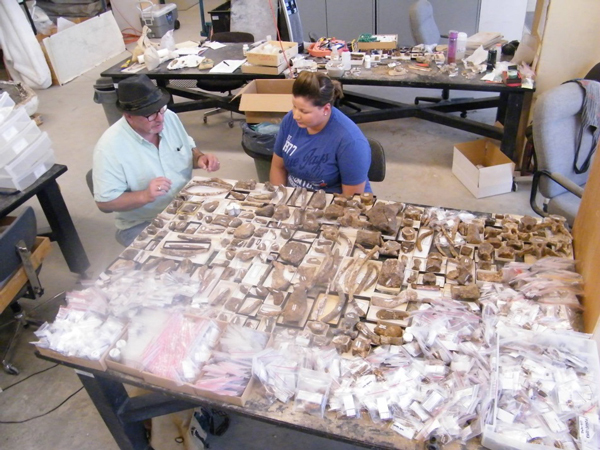
The RSM’s Curator of Vertebrate Palaeontology, Tim Tokaryk, and 2014 summer student Dakota Bast look over the 2004 collection from Herschel. Included are over 3000 fossils!
Intriguingly, the marine bonebed also contains a large amount of fossil wood and amber, indicating that the fossils accumulated in a place that wasn’t far from the shoreline. Trace fossils found at the site also support this interpretation.
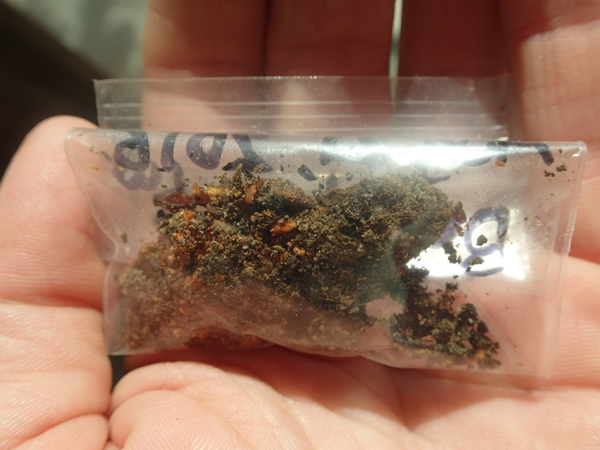
Amber collected from the Herschel marine bonebed in August 2016.
In August 2015, while assisting the RSM with collection of the marine bonebed, McGill palaeontologist Dr. Hans Larsson made an exciting and unexpected discovery just across the Coal Miner’s Ravine from the Herschel marine bonebed.
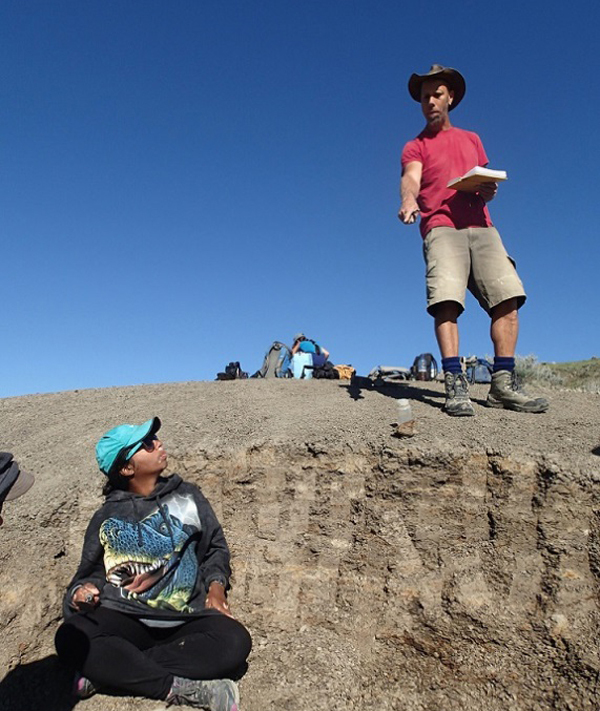
McGill’s Dr. Hans Larsson spots something unexpected.
At a stratigraphic level about 2-3 metres above the marine bonebed, Dr. Larsson discovered a few fragments of dinosaur bone. Following the bone trail up at the hill, he discovered part of an associated dinosaur skeleton. In the final days of our field season, we began excavating the skeleton.
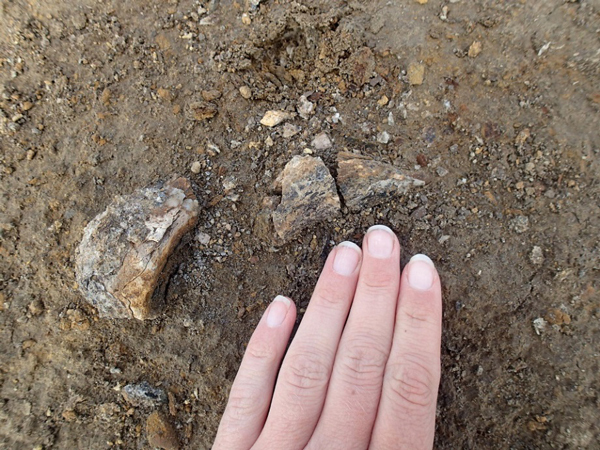
The first pieces of the first dinosaur from the Herschel begin to emerge.
The dinosaur, named ‘Oscar’ because of its proximity to the Herschel dump site, is significant because it was the first non-marine animal found in the Herschel area. ‘Oscar’ is not an example of ‘bloat-and-float’, where an animal died, gets washed out to sea and then sinks. Rather, this dinosaur was found in a thin layer of terrestrial rocks sandwiched between the marine rocks. This implies that the sea briefly receded from the area, and then returned.
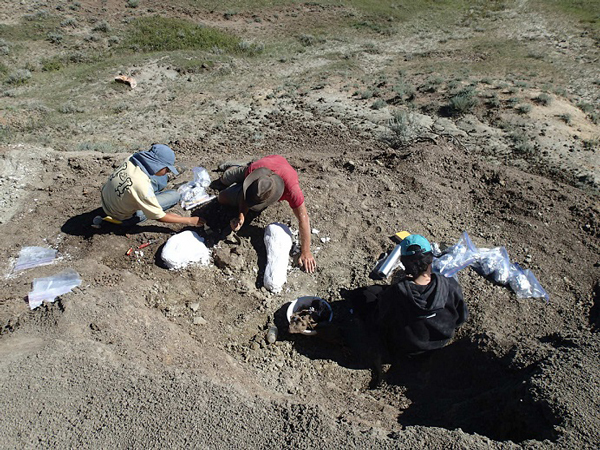
The RSM and McGill crews collecting ‘Oscar’ the dinosaur in 2015.
‘Oscar’ is from a time period in which few dinosaurs have been found in Saskatchewan. The discovery was significant enough that McGill and the RSM returned in June 2016 to collect more material.
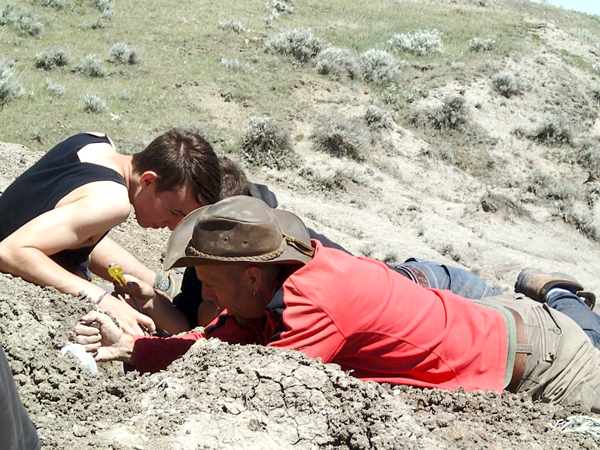
Dr. Larsson and McGill student Aidan collecting ‘Oscar’ in June 2016.
While collecting ‘Oscar’ in 2016, Dr. Larson and I discovered a second marine bonebed, about three metres directly below the layer ‘Oscar’ was found in. This bonebed was named the ‘Marvel Marine Bed’, after local Metis hero, Ms. Marvel Houston.
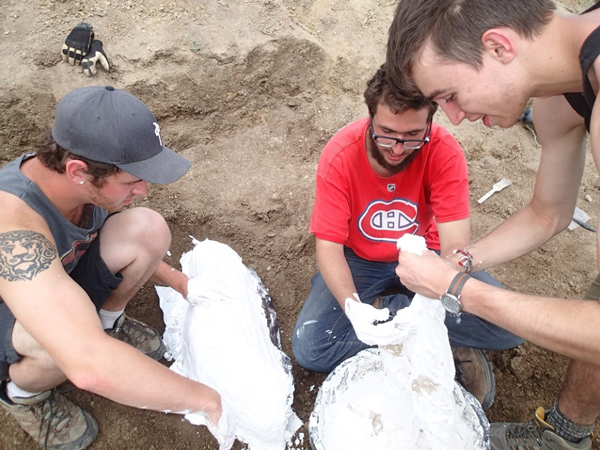
Herschel interpretive staff member Trey, with McGill students Alec and Aidan, collecting in the Marvel Marine Bed, June 2016.
Herschel continues to be an exciting place to work. In July 2016, I returned to Herschel with Aaron Kilmury, a preparator from the Royal Tyrrell Museum of Palaeontology in Alberta, to collect material from an associated short-necked plesiosaur skeleton from the original marine bonebed.
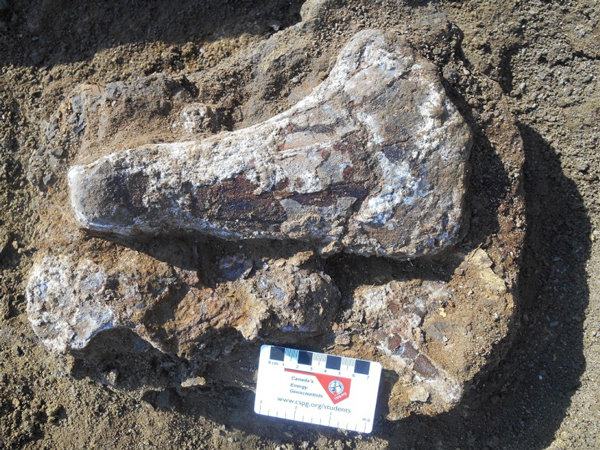
Material collected from the Herschel bonebed in August 2016.
Fossil finds in August included several vertebra and ribs, a humerus and a femur from a short-necked plesiosaur. We also collected a number of shark teeth, fish vertebra and trace fossils. These fossils, as well as all other from Herschel, are currently at the T. rex Discovery Centre in Eastend, awaiting preparation and cataloguing.
We’re excited to be heading back to Herschel next summer discover what else the area may have in store!

